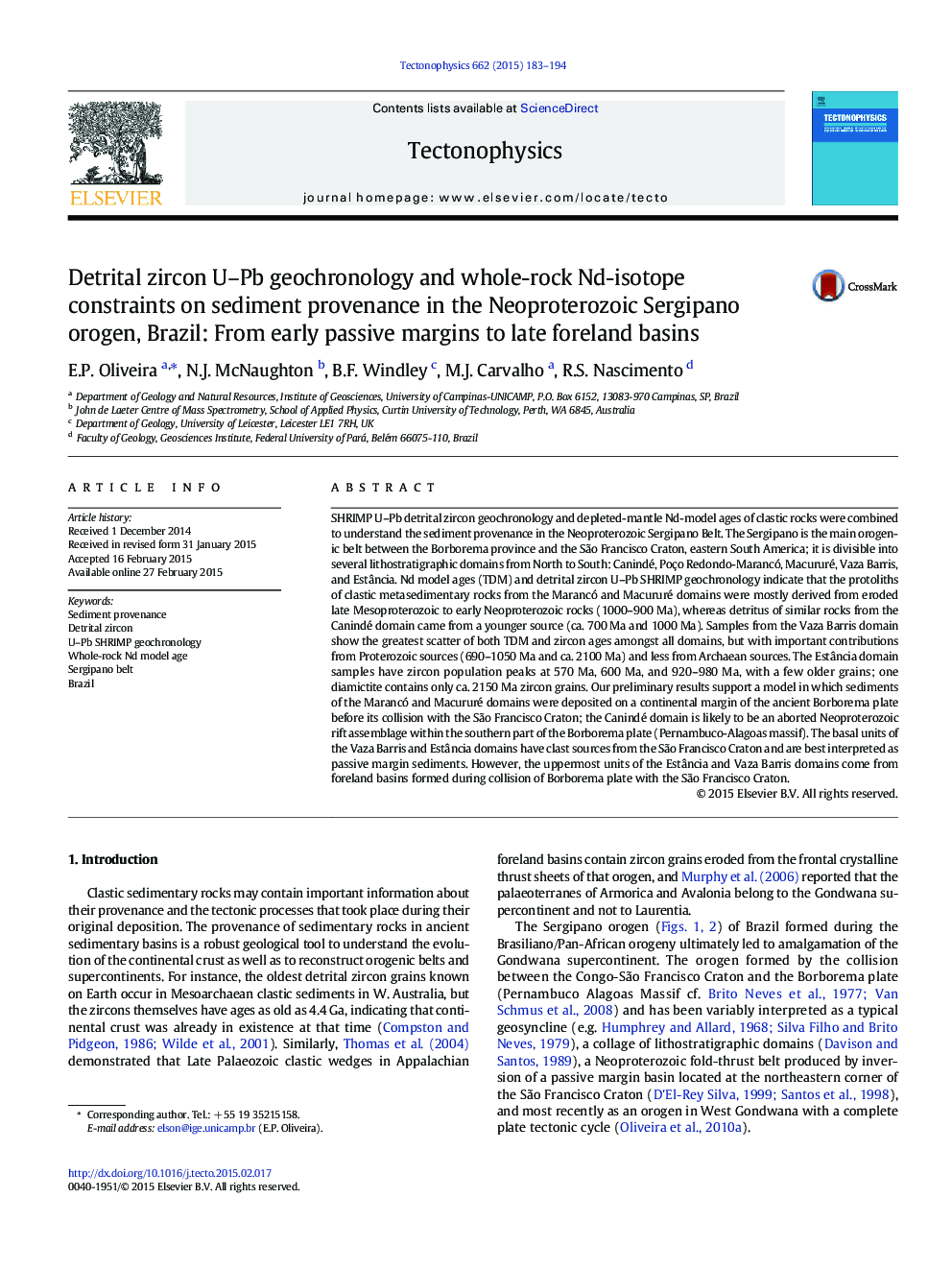| Article ID | Journal | Published Year | Pages | File Type |
|---|---|---|---|---|
| 4691465 | Tectonophysics | 2015 | 12 Pages |
•Detrital zircon U–Pb SHRIMP ages and whole-rock Nd isotope data of clastic sediments•Main zircon age populations are Archaean, Palaeoproterozoic and Neoproterozoic.•Detritus sources in the São Francisco Craton and Borborema Province•Sediments deposited in passive margins and foreland basins
SHRIMP U–Pb detrital zircon geochronology and depleted-mantle Nd-model ages of clastic rocks were combined to understand the sediment provenance in the Neoproterozoic Sergipano Belt. The Sergipano is the main orogenic belt between the Borborema province and the São Francisco Craton, eastern South America; it is divisible into several lithostratigraphic domains from North to South: Canindé, Poço Redondo-Marancó, Macururé, Vaza Barris, and Estância. Nd model ages (TDM) and detrital zircon U–Pb SHRIMP geochronology indicate that the protoliths of clastic metasedimentary rocks from the Marancó and Macururé domains were mostly derived from eroded late Mesoproterozoic to early Neoproterozoic rocks (1000–900 Ma), whereas detritus of similar rocks from the Canindé domain came from a younger source (ca. 700 Ma and 1000 Ma). Samples from the Vaza Barris domain show the greatest scatter of both TDM and zircon ages amongst all domains, but with important contributions from Proterozoic sources (690–1050 Ma and ca. 2100 Ma) and less from Archaean sources. The Estância domain samples have zircon population peaks at 570 Ma, 600 Ma, and 920–980 Ma, with a few older grains; one diamictite contains only ca. 2150 Ma zircon grains. Our preliminary results support a model in which sediments of the Marancó and Macururé domains were deposited on a continental margin of the ancient Borborema plate before its collision with the São Francisco Craton; the Canindé domain is likely to be an aborted Neoproterozoic rift assemblage within the southern part of the Borborema plate (Pernambuco-Alagoas massif). The basal units of the Vaza Barris and Estância domains have clast sources from the São Francisco Craton and are best interpreted as passive margin sediments. However, the uppermost units of the Estância and Vaza Barris domains come from foreland basins formed during collision of Borborema plate with the São Francisco Craton.
